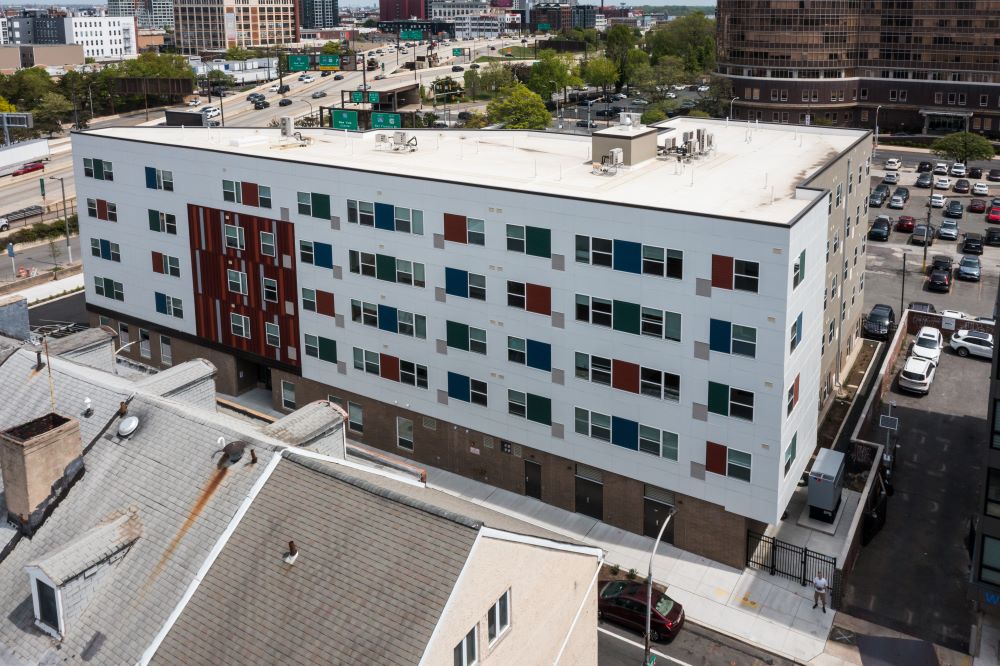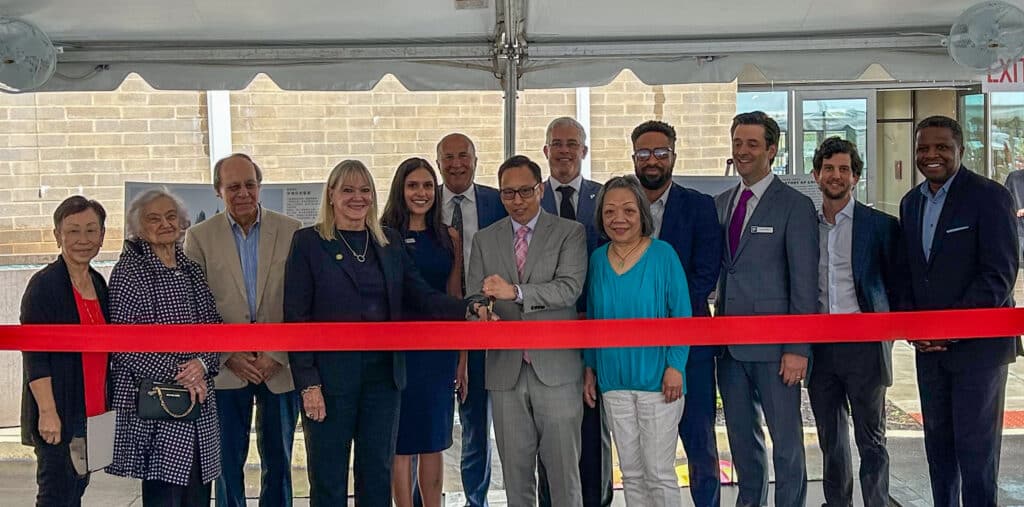Philadelphia’s Man An House
Cultural Preservation through Senior Housing

By Mark Fogarty
6 min read
Affordable housing is playing a key role in keeping Philadelphia’s Chinatown thriving.
Now, a brand new senior housing project brings more affordable units online while simultaneously preserving the neighborhood’s cultural strengths.

That new project is called Man An House, a five-story building on North 9th Street near the Vine Street Expressway. Pronounced “Mon Ohn,” Man An House is a result of a partnership between the Philadelphia Chinatown Development Corporation (PCDC) and Pennrose. The project’s 51 units will be fully restricted to those earning between 20 and 60 percent of area median income (AMI).
“Chinatown is in desperate need of affordable housing, whether senior, multifamily, or homeownership,” says John Chin, executive director of PCDC. According to data from Pennrose, Philadelphia currently has a 59,000-household waitlist for affordable housing. This need is particularly acute for the city’s seniors, 42 percent of whom are living below the poverty level.
Assembling the Housing Puzzle
Lindsey Samsi, senior developer at Pennrose, says that Man An House is the result of a 2016 request for proposals from the Philadelphia Redevelopment Authority, which owned the long-vacant site that had most recently been used as a parking lot. Pennrose’s original plans for an expansive mixed-income development were scaled back during the pandemic, Samsi says.
Man An House was financed using nine percent Low Income Housing Tax Credits from the Pennsylvania Housing Finance Agency (PHFA). Wells Fargo was both the investor and the construction lender, providing $11.6 million in equity. Additional financing includes a $1.5 million grant from the Federal Home Loan Bank of Pittsburgh’s Affordable Housing Program, $5.5 million from the Commonwealth of Pennsylvania’s Redevelopment Assistance Capital Program, and a loan from the Pennsylvania Housing Finance Agency. Total development cost is about $23 million, according to Samsi. Land was provided directly by the Philadelphia Redevelopment Authority.
The project contains just one two-bedroom apartment, with the rest of the units being one-bedrooms or studios. Ten percent of the units have been set aside for formerly homeless seniors.
Despite the deep subsidy, “the units are beautiful,” Samsi says, emphasizing their 360-degree views.
Additionally, the project was designed and constructed to meet the Enterprise Green Communities standards and will receive ENERGY STAR Certification. Having a green building “was part of our vision,” as well as PHFA’s vision, Samsi says.
Preserving a “Lasting Peace”
Samsi credits PCDC as being “a true partner” in the deal. While Pennrose provided the bulk of the expertise on development, both Samsi and Chin credit the partnership with Man An House’s potential as a lasting cultural boon for Chinatown.
“This is a site PCDC has targeted for many years and was finally able to develop in partnership with Pennrose,” Chin explains. “We came in as a minority sponsor. Our part has been doing a lot of the engagement work, advising Pennrose on what to build and how to design it. We are also a one percent partner in it, with the plan to buy out Pennrose after the tax credit period ends.”
The project name signifies longevity, Chin says. “Man in Chinese is 10,000, and An means peace,” he says, translating to a hope for a long, peaceful old age for its residents.
Philadelphia’s Chinatown is a hub for Asian American heritage and culture, he says, so the more residents, the more people who value Chinatown as an authentic hub.
Chin credits Man An House as a potential bulwark against the general pressures eroding American Chinatowns; Chin says that today, only 41 such communities remain, down from a historic high of 83. PCDC’s strategy for keeping Philadelphia’s Chinatown thriving is to build residential units and provide cultural and language support.
Thus, Man An House “fits perfectly in with our mission,” says Chin. “It ensures that Chinatown is a mixed-use and mixed-income community where we focus on anti-displacement measures and equity.”
Now fully leased up, Man An House has a part-time staffer on site that speaks English, Cantonese, and Mandarin. PCDC’s community center—located just one block away—provides off-site services to residents, including workshops to increase tech literacy, tai-chi classes, ping pong, and badminton.
“It’s a pretty comprehensive program to keep people’s minds and bodies healthy. We even have health programs and health screenings,” says Chin.
Chin also emphasizes the importance of the building’s centrality within Chinatown, allowing residents to simply walk out the door to access culturally authentic services or amenities. Man An House is also a transit-oriented development located near bus and train lines.
Another cultural signifier will be a large mural on the outside of the building, which Chin says, “Tells the history of the immigrants that came to Philadelphia Chinatown.” The mural is a recreation of the famous “History of Chinatown” mural originally executed in 1996 to celebrate the neighborhood’s 125th anniversary.
Man An House is not the first affordable housing development from PCDC. In fact, the organization’s development portfolio totals 533 units, Chin says, with more than half of those affordable. Through these efforts, and with the addition of Man An House, “we can build affordable housing in Chinatown for the immigrants that want to live here,” Chin says.
Philadelphia Chinatown
History Presented in Mural

The new mural coming to Man An House is a reproduction of the “History of Chinatown” mural located at 10th and Winter St.
In 1996, the original mural was created for Chinatown’s 125th anniversary with artists Arturo Ho, Giz, N. Phung, & H. Tran.
The mural depicts the evolution of Chinatown told through the story of a family. It begins with a laundryman, a nod to the laundry business that founded Chinatown. The water wrung from his towel flows into a river and road, taking us through the family’s experiences with migration, labor, and community.
It ends with Chinatown coming together to fight against the Vine St. Expressway while working to educate future generations.
This mural is being recreated at Man An House by mural artist ChenLin Cai based on feedback PCDC received from its community engagement at cultural celebrations.
Source: Philadelphia Chinatown Development Corporation
